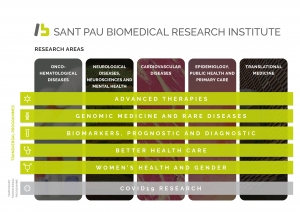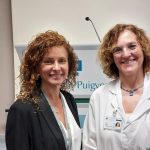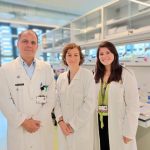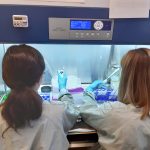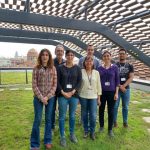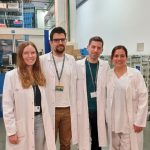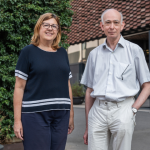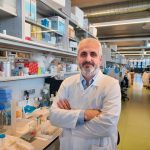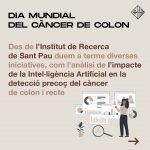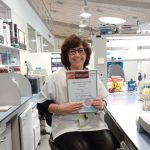
L’Institut de Recerca de l’Hospital de la Santa Creu i Sant Pau – IIB Sant Pau ha posat en marxa un nou programa transversal de recerca per fomentar la perspectiva de gènere en totes les seves àrees i grups de investigació.
Amb aquest nou programa, creat en el marc del Pla de Recerca i Innovació Responsable (RRI), l’IIB Sant Pau implementarà accions adreçades a fomentar la incorporació de la perspectiva de gènere en el contingut de la recerca i a promoure la investigació específica de gènere per cobrir els buits de coneixement, posant en marxa els mitjans i recursos necessaris per facilitar-ho.
Malgrat que les diferències de sexe i gènere tenen un impacte significatiu en la salut, la investigació biomèdica continua originant-se principalment en estudis realitzats en material cel·lular, models animals masculins o homes i sovint no té en compte els diferents patrons de salut i malaltia en dones i homes en funció del sexe i el gènere.
Aquesta manca de perspectiva de gènere pot tenir greus conseqüències. Per exemple, les dones solen estar infrarepresentades en els assaigs clínics, cosa que pot provocar que les dosis de medicaments no siguin les adequades, problemes de seguretat, com ara efectes adversos no esperats i també pot emmascarar diferències importants en la progressió de la malaltia i la resposta al tractament.
A més, el biaix de gènere en la investigació pot provocar una manca de comprensió dels problemes de salut específics de les dones, com ara els trastorns relacionats amb la menstruació, les complicacions relacionades amb l’embaràs i els símptomes relacionats amb la menopausa. Encara, més enllà del sexe, cal incorporar la dimensió de gènere en la recerca, amb intereseccionalitat, que ens permeti obtenir resultats científics que responguin a les necessitats reals, contribuint a incrementar l’equitat i la justícia social.
El director de l‘IIB Sant Pau, Dr. Jordi Surrallés, comenta que “es crucial que la investigació biomèdica adopti una perspectiva de gènere per entendre millor l’impacte del sexe i el gènere en els resultats de salut. Perquè això passi, és imprescindible que des dels centres de recerca creem estructures que facilitin les sinèrgies entre els grups, com aquest nou programa, i que fomentem el canvi impulsant projectes i dedicant recursos a acompanyar i formar el personal científic en aquest àmbit. No n’hi ha prou amb adherir-se a manifestos o signar declaracions si això no s’incorpora a l’estratègia del centre i es tradueix en accions concretes”.
També destaca que la perspectiva de gènere també ha d’estar present en “la governança dels centres, ja sigui fomentant la paritat en el lideratge dels grups de recerca i els comitès científics interns i externs que assessoren la direcció de l’Institut, com en les polítiques institucionals. Alhora, tenim la responsabilitat d’impulsar i visibilitzar models femenins en recerca, en l’entorn científic, en congressos i actes, i especialment en l’entorn social, mitjançant les activitats de difusió i divulgació de la ciència. Des de l’IIB Sant Pau treballem activament per garantir la igualtat de gènere en tots aquests àmbits”.
El nou programa transversal de recerca en Salut de la Dona i Gènere està coordinat per la Dra. Elisa Llurba, cap del grup de medicina perinatal i de la dona a l’IIB Sant Pau i directora del servei de ginecologia i obstetrícia a l’Hospital de Sant Pau, i per la Dra. Ma Rosa Ballester, cap de la unitat de Recerca i Innovació Responsable a l’IIB Sant Pau.
“Prioritzant la perspectiva de sexe i de gènere en la investigació biomèdica, augmentem la reproductibilitat dels estudis, fent-los lliures de biaixos, afegim valor a la recerca fent-la més ètica i responsable, augmentant la equitat i la justícia social. Amb aquesta visió contribuïm a optimitzar els resultats de salut per a totes les persones, independentment del seu sexe o gènere, amb un enfocament interseccional com element explicatiu de les desigualtats sistèmiques”, explica la Dra. Ma Rosa Ballester. Amb aquest nou enfocament transversal, l’IIB Sant Pau esdevé un centre pioner i aposta decididament per incorporar la perspectiva de gènere en totes les seves àrees de recerca, per tal de contribuir a la consecució dels objectius en aquest àmbit.
“Cal incorporar la perspectiva de gènere en tot el procés, això inclou augmentar la representació de les dones en els assaigs clínics, plantejar-nos de quin sexe son les línies cel·lulars o els models animals que es fan servir en recerca bàsica, analitzar les diferències de sexe i gènere en accés al sistema sanitari, la percepció de la malaltia o la salut, el diagnòstic, la progressió de la malaltia i la resposta al tractament. Per tant, cal abordar el biaix de gènere ja en el disseny de qualsevol projecte de recerca, i també en l’anàlisi i com ho expliquem a els i les usuàries finals”, afegeix la Dra. Elisa Llurba.
Els principals objectius d’aquest programa transversal són:
- Promoure la investigació en la salut amb perspectiva de gènere i en malalties que afecten a dones.
- Disminuir la bretxa en la representació sexe femení en qualsevol tipus d’estudi, ciència bàsica fins a recerca aplicada en humans.
- Fomentar la col·laboració entre els grups de recerca de les 5 àrees de recerca per investigar tenint en compte la perspectiva de gènere.
- Impulsar la realització d’assaigs clínics amb fàrmacs i eines tecnològiques per a patologies que afecten les dones.
- Atraure talent amb interès per investigar en gènere.
- Captació de finançament públic i privat en aquest àmbit.
- Esdevenir un centre referent en recerca de gènere.
- Tancar la bretxa de gènere en la recerca.
“Aquest programa ha de servir de catalitzador d’una necessitat real. Amb aquest programa l’IIB Sant Pau posa el marc i els instruments per fomentar-ho”, conclou la Dra. Llurba.
Sant Pau compromès amb la salut i el gènere
Sant Pau està compromès i aborda l’agenda de gènere a tots els nivells. La creació del nou programa transversal de recerca en Salut de la Dona i Gènere és un exemple de la confluència del treball conjunt entre l’institut de recerca i l’hospital.
D’una banda, l’Hospital de la Santa Creu i Sant Pau va ser un dels primers centres catalans en crear la Comissió de Salut i Gènere, que impacta en l’assistència, la recerca i la docència. En paral·lel, l’Institut de Recerca de Sant Pau – IIB Sant Pau, va elaborar el Pla de Recerca i Innovació i Responsable (RRI) prioritzant l’agenda de gènere , amb mesures i accions que impliquen, per exemple, la gestió del talent i el foment de la carrera científica en les dones, l’acompanyament metodològic i la formació en la incorporació de la perspectiva de gènere en recerca, i la creació del grup transversal de recerca que avui es presenta.
Línies de recerca en salut i gènere: alguns exemples
L’IIB Sant Pau té en marxa cada cop més projectes que incorporen la perspectiva de gènere des del seu plantejament inicial. Un dels exemples paradigmàtics són les malalties cardiovasculars. Cada vegada hi ha més evidència de les diferències tan importants que existeixen tant en l’evolució com en les manifestacions clíniques de diferents trastorns cardiovasculars i que aquestes seves variables poden tenir un impacte en la prevenció i el seu tractament.
En l’àrea de Malalties Cardiovasculars estan en marxa projectes com ara el RETROVE, que busca algoritmes matemàtics per definir el risc individual de patir trombosi venosa, o un altre estudi que analitza el tractament amb betabloquejants en pacients amb fibril·lació auricular en funció del sexe.
Per exemple, el grup que lidera la Dra. Lina Badimon està duent a terme un projecte de medicina personalitzada en una cohort en l’àmbit nacional amb diagnòstic genètic d’hipercolesterolèmia familiar i on l’especificitat de sexe és un dels objectius de l’estudi a l’hora d’identificar i determinar la importància de nous biomarcadors moleculars.
En aquest àmbit de salut cardiovascular, la Dra. Elisa Llurba, lidera conjuntament amb investigadores del Grup de Recerca en Medicina Perinatal i de la Dona, del Grup de Recerca en Bioquímica i el Grup de Malalties Cardiovasculars, tres estudis amb finançament de l’Instituto de Salud Carlos III sobre l’impacte de diferents processos reproductius en la salut cardiovascular en tres etapes clau: prèvia a la gestació en dones en procés de reproducció assistida, durant la gestació, i als 3-6 anys després del part. Un dels objectius és estudiar com les malalties d’origen placentari poden tenir un impacte en la salut cardiovascular materna i neonatal.
A l’àrea de recerca de Malalties neurològiques, neurociències i salut mental, que dirigeix el Dr. Juan Fortea, també hi ha diversos projectes plantejats amb perspectiva de gènere. Entre ells, s’estan estudiant les diferències de gènere en la demència frontotemporal i també en el vincle entre la malaltia d’Alzheimer i síndrome de Down, o la resposta terapèutica a la malaltia de Parkinson en funció del sexe. En ictus també s’estan realitzant estudis d’estratificació per sexe i la recerca de factors genètics específics en malalties complexes.
Al grup de malalties genètiques hi ha diversos estudis en marxa que tenen en compte la perspectiva de gènere, com ara la detecció -prèvia a l’embaràs- de dones amb alt risc de tenir fills afectes de malalties genètiques, la identificació de variants predictores de toxicitat greu en pacients amb càncer colorectal tractats amb fluoropirimidines, l’estudi farmacogenètic en pacients psiquiàtrics atesos en centres de salut mental, o l’estudi farmacogenètic i farmacocinètic en pacients amb trasplantament de progenitors hematopoiètics que reben un acondicionament amb busulfan, entre d’altres.
A més, hi ha projectes específics que parteixen directament de diferències de gènere, com ara la recerca en la malaltia endocrinològica i metabòlica en la gestació o l’estudi dels canvis neurològics en la dona perimenopàusica, així com la totalitat dels projectes de recerca de Ginecologia i Obstetrícia que lidera la Dra. Llurba, en el que la perspectiva de gènere va encara mes enllà i treballa aspectes psico-bio-socials com el impacte de les pèrdues reproductives precoces, la co-creació ciutadana en l’experiència de les dones que pateixen una endometriosi o l’estudi de la violència obstètrica. I també la recerca que es fa des del Grup de Oncologia Ginecològica i Peritonetal, dirigit per la Dra. Virtudes Céspedes, que estudia els càncers d’endometri i ovari amb beques de la Marató de TV3 i de l’Instituto de Salud Carlos III, entre d’altres.
En recerca en salut pública, des de fa anys, els grups de recerca de l’Agència de Salut Pública de Barcelona de l’IIB Sant Pau incorporen la perspectiva de gènere en bona part dels seus estudis. A començaments de 2023 es va publicar l’informe “Desigualtats de gènere en la salut a Barcelona” en què s’examinen les desigualtats de gènere en els determinants socials de la salut, els problemes de salut, els hàbits relacionats amb la salut i la utilització de serveis sanitaris amb una perspectiva interseccional que considerava la classe social i el país de naixement, i de curs de vida. També han examinat les desigualtats de gènere des d’una perspectiva interseccional en salut mental, recollides en l’informe “Situació de la salut mental de la població de Barcelona i els seus determinants”. La interseccionalitat és clau en els estudis amb perspectiva de gènere en salut, ja que la majoria inclouen determinants com el treball, l’habitatge i la violència. Per exemple, la recerca liderada per la Dra. Lucía Artazcoz, investiga desigualtats de gènere en la salut relacionades amb la compaginació de vida laboral i familiar, el treball a temps parcial o llargues jornades de treball.
Aquests exemples mostren clarament la necessitat d’incorporar la perspectiva de gènere en tots els estadis de la recerca: disseny, execució i anàlisi de resultats; però també en tots els seus àmbits: recerca bàsica, preclínica, clínica i salut pública.
